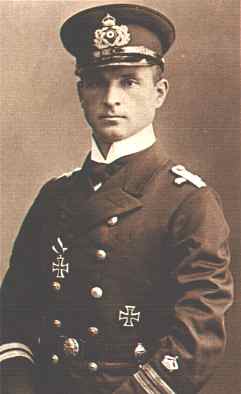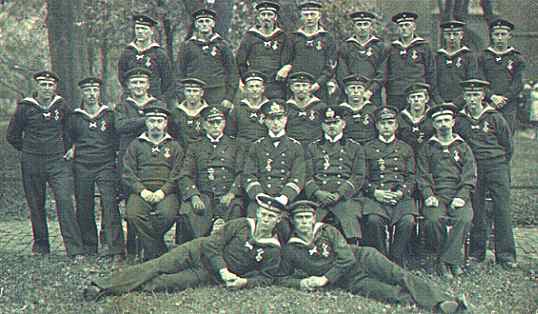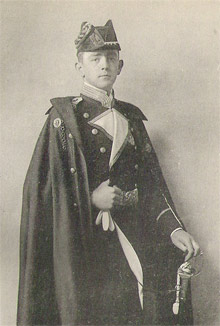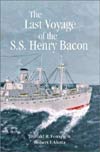On 5th September 1914, the underestimated U-boat was finally able to show its deadly potential and draw first blood. With the first life torpedo fired by a submarine in wartime, Kptlt. Otto Hersing from SM U 21 hit the British light cruiser HMS Pathfinder (3,000 tons) off the Firth of Forth on a calm, sunlit day. The cruiser sank within minutes with heavy loss of life. Hersing, who was to become one of Germany's leading U-boat aces, remained in command of SM U 21 for 3 years and conducted 21 war patrols, during which he sank 36 ships, including two battleships and two cruisers. Considering the continuing strain and stress connected with the unique position of a U-boat commander, this achievement must be regarded as outstandingly remarkable.
This striking first appearance of the submarine in war time history was even surpassed on 22nd September 1914, when SM U-9
(Kptlt. Otto Weddigen) sank the three cruisers HMS Aboukir, Hogue and Cressy (12,000 tons each) off the Hook of Holland in 75 mins.
1,460 British sailors died in this world shattering demonstration of the U-boat's terrible capabilities.
Oberleutnant z.S. Johannes Spieß, Weddigen's First Watch Officer, later wrote:
"In the periscope, a horrifying scene unfolded... We present in the conning tower, tried to suppress the terrible impression of drowning men, fighting for their lives in the wreckage, clinging on to capsized lifeboats..."

Kptlt. Otto Weddigen (1880 - 1915)
In Germany, SM U-9's success was regarded as an outstanding heroic deed. The German Emperor awarded the whole crew the Iron Cross, and SM U-9 was permitted to carry this medal as the boat's crest on its conning tower: A tradition which still is in effect with all German submarines ever named U-9. October 1914 proved to be another fairly unhappy month for the Entente Cordiále, when on 11th October 1914 SM U 26 sank the Russian cruiser Pallada (7,900 tons) in the Gulf of Finland and again SM U-9 under Weddigen managed to sink the light cruiser HMS Hawke (7,000 tons) off Aberdeen. For his continued excellent performance, Otto Weddigen was awarded the Pour le mérite (or "Blue Max" as the British called it), the highest German decoration for valour at that time.

The crew of SM U-9 after the decoration with the Iron Cross
(first row seated third from left - Otto Weddigen)
A very important but also a very unspectacular event took place on 20th October 1914 just off southern Norway, when SM U 17 (Kptlt. Feldkirchner) sank the British steamer SS Glitra (866 tons) according to prize rules after investigating the cargo of the vessel and letting the crew leave the ship and board the lifeboats. This was the first time a submarine sank a merchant vessel and for the future, merchantmen should become the prime targets of the submarine.
Another precedence case happened six days later when SM U 24 (Kptlt. Rudolf Schneider) torpedoed the unarmed SS Admiral Ganteaume (which was towed to port) in the Dover Strait without warning, the first time a merchant was attacked in such a way.
In November 1914 it became clear that this war would be one of commerce with the opponents trying to strangle each others economies to force a surrender. The British had already installed from the first day of the war a distant blockade of Germany, a method which had already proven its worth in the Napoleonic wars and should finally win the war for the Allies. Realizing the economic dimension of the war, Admiral Hugo von Pohl, the German High Seas Fleet Chief of Staff, submitted a memorandum to Theobald von Bethmann-Hollweg, the German Chancellor, advocating a counter-blockade of Britain by U-boat in response to the British blockade: A very wise advice. Put into effect consistently, this U-boat blockade could have won the war for Germany.
When the year 1914 came to an end, U-boats had sunk eight secondary warships and ten merchants (20,000 tons) at the loss of 5 U-boats.
See chapter 3. Escalation.




